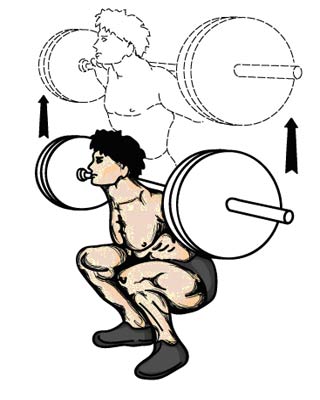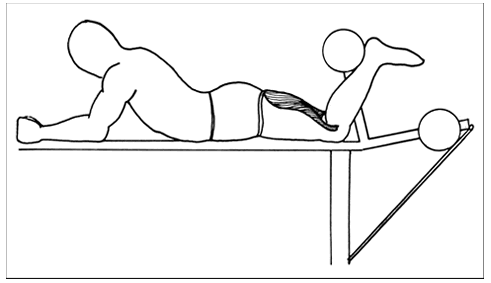Weight lifting is very important for trail runners to help avoid injury. The stronger your body is, the better equipped it will be to take on the uneven terrain it impacts on finite parts. So for trail running specific weight training, it is best to focus on the lower body. Upper body weight training is more for long distance running. So if you are running long distances and on trails then you’ve got double the weight training to do. It’s cool, you’ll get the overtime results.
When weight training for trail running you want to focus on strength, power, and balance. Don’t be like Saddam Hussein  and only have 2 out of the 3 attributes, trust me, it won’t end well. Start with squats to strengthen your thighs, hips, buttocks, and hamstring. Don’t lift a lot of weight even though you may be able to. Grunting and throwing down your weights isn’t cool, likewise, kicking them like your in the movie, ‘The Program’ is pretty lame. Squat your body weight. If you want to avoid squats try the leg press but again, although it may be tempting to your ego, don’t put excess weight on. Another way to exercise similar to squats is to hold two dumbells to your side and practice lunges. This gives you the benefit of isolating one leg at a time, much like your body will encounter on the trail as you pivot and stretch to the next safe step. You can also do single leg squats on the Smith machine if available. These exercises improve your ability to vary your steps on the trail without straining your glutes, quads, or hamstring.
and only have 2 out of the 3 attributes, trust me, it won’t end well. Start with squats to strengthen your thighs, hips, buttocks, and hamstring. Don’t lift a lot of weight even though you may be able to. Grunting and throwing down your weights isn’t cool, likewise, kicking them like your in the movie, ‘The Program’ is pretty lame. Squat your body weight. If you want to avoid squats try the leg press but again, although it may be tempting to your ego, don’t put excess weight on. Another way to exercise similar to squats is to hold two dumbells to your side and practice lunges. This gives you the benefit of isolating one leg at a time, much like your body will encounter on the trail as you pivot and stretch to the next safe step. You can also do single leg squats on the Smith machine if available. These exercises improve your ability to vary your steps on the trail without straining your glutes, quads, or hamstring.
The next exercise you should do to get specific exercise is the hamstring curl. To the left you can see it being done on a machine. If you are not at a gym you can lay flat on your stomach and lift your muddy trail running shoes for extra weight in the same manner as the picture. This exercise will improve your breaking ability when trail running downhill. However I don’t recommend breaking when trail running downhill.
Another important area to improve for trail running with weight training is your ankles. Grab some ankle weights or wrap a flexible weight around one ankle. Then rotate your foot from side to side, in a circle, or do the alphabet. You know the alphabet motion. Do this exercise one ankle at a time to prepare your pivot points for single impacts on the trail.
Another great work out for the trail is calf raises. Use the machine at your gym or stand up repeatedly like your in the back of a group trying to get into the picture. This will help in your uphill trail running as you dig each step closer to the top. Although it may be tempting, avoid adding too much weight. You want to focus on more reps to run up the long hill not carry furniture up stairs. It is important to stretch before and after calf raises because calves tend to get tighter than other muscles.
Even though your lower body is taken care of don’t forget to work your core and back, both are important as you pivot your upper body down the singletracks of the trail. Remember, you don’t have to look like a trail runner to be a trail runner. Don’t feel sorry for yourself, bulk up!


